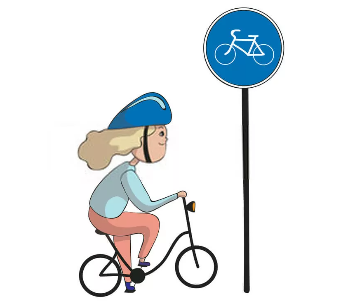Take or leave it, whether your kid uses the helmet occasionally or frequently, it will get dirty and smelly. Most parents have been asking how to clean kids’ helmets. Helmets are the most essential and vital cycling gear for your child. Helmets reduce head injuries that are rampant among cyclists.
A child who cycles or rides a scooter needs a clean helmet. Cleaning a helmet should be a regular routine.
One of the great steps of maintaining a bike helmet is cleaning it. However, it can compromise its safety features without proper knowledge of how to wash a bike helmet for kids. Helmets need to be handled with the utmost care when washing.
This article introduces you to the steps when cleaning the helmet, the recommended cleaning products, and the dos and don’ts. We want your kid’s helmet to be clean and free from lice and foul smells.
What you should know before washing a Kids’ Bike Helmets
Before deciding on the right course of action to take when cleaning your kid’s helmet, the helmet makers' website is a good start. Most manufacturers have compiled instructions for cleaning the kids’ bike helmets. Manufacturers recommend cleaning the kids’ helmets using mild soap and rinsing thoroughly using water.
There is no fancy shortcut when cleaning a bike helmet. The aim is always to clean the interior of the helmet. Some detergents that can work include dish soap or baby shampoo, as long as it is mild.
It would help if you only used a few drops of dishwashing soap or liquid with a sponge to clean a bike helmet. Warm water is recommended when cleaning helmets.
Steps for Washing Kids’ Helmets
Here are the steps:
1. Mix the shampoo or the mild soap with warm water.
2. Remove the visors and pads from your helmet.
3. Dip a washcloth or sponge into the solution and wring it to remove excess water.
4. Use the sudsy and moderately wet sponge to scrub the interior of your helmet.
5. Repeat the action several times until the helmet's interior has received adequate scrubbing.
6. Use clean water and repeat steps 4 and 5 to remove soap from the helmet.
7. Using the sponge with soapy water, clean the gritty exterior of your kid’s helmet. This should be done carefully to avoid redoing the interior lining of the helmet.
8. If there are stains in the helmet, especially on the chin strap, use rubbing alcohol. Some people always ask how they can remove stains from their kids’ helmets, and rubbing alcohol should get things tidy.
9. Always know that the foam lining of the kids’ helmets and any helmets take a long to dry. This means that you should not soak the helmet in water for long.
10. Use a dry towel to dry the interior vigorously after cleaning the kids' helmets. The helmet should then be left to air dry.
Do these Six Things when Cleaning Kid’s Bike Helmets
There are some rules to follow when cleaning your kid’s bike helmet. Here is what you should do:
1. Always read the manufacturer’s instructions on cleaning the helmet. If your helmet lacks instructions, visit the relevant manufacturer’s website for information on how to clean the helmet.
2. Always use warm water when cleaning helmets for your toddler or kids. The water should always be below 250C.
3. Use neutral gel, baby shampoo, or dish soap. It is always a water and soap affair, nothing else.
4. If you can dismantle the different parts of the helmets, do so. It makes cleaning easy with thoroughness to different angles of the kids’ helmets.
5. The pads are always affected by sweat and could cause foul smells in kids’ helmets, so they should be wiped thoroughly. Remove, clean, and air-dry alongside the helmet if they can be removed.
6. If a helmet is suspected of having lice, place it in an airtight plastic bag for 48 hours to 2 weeks until the eggs have hatched and died.
Avoid These Six Things When Cleaning a Bike Helmet
When cleaning a helmet, you should avoid doing this:
1. Use strong soap solutions, ammonia, and bleach to clean your kid’s helmets. These detergents affect the shell and the foam, which affects the integrity of the entire helmet.
2. Putting the helmet in a dishwasher or washing machine. If you do this, you will degrade the helmet and affect its integrity. Your kid’s skull is not just hard enough to take a crush or an injury. So keep off dishwashers.
3. Put the helmet in a dryer or microwave to clean it. Helmets.org did many tests, and the results caution against using dryers or microwaves.
4. Never dry the helmet in direct sunlight or near a direct heat source. Avoid any dryers, as this only damage your precious kid’s helmet.
5. Do not use abrasive papers or clothes that can cause grating and chips on the helmet’s shell. Damage to the shell might force you to purchase an uncompromised kid’s helmet.
6. Never use sprays of any type on your helmet. Some parents are tempted to use sprays to keep off foul smell and lice from the kids’ helmets. This is wrong! Avoid odor-eliminating sprays like Lysol or Febreze. When you do so, the residues can mix with sweat and become a disturbance as your kid's cycle, causing an accident. If a helmet is too smelly, you can either use white vinegar or vodka to neutralize the odor. Washing ultimately removes odor on kids’ helmets.
Read: How to deal with lice in your Kid's bike Helmet.
Conclusion
You can use all evocative words and descriptions for a smelly helmet. As a parent, failure to understand how to wash kids’ helmets can send you on an economic spiral. One mistake, and you are back at the shop buying a new helmet for your kid!
Our article on how to clean kids’ helmets comes in handy. Helmet-cleaning knowledge is necessary even for adults riding bikes and even motorcycles. We have talked you through washing a helmet the right way. We now believe you can simultaneously deal with lice in your kid’s helmet and the foul smell.
Helmets should never be sprayed or left in dishwashers, dryers, or washing machines. Instead, warm water and mild detergent are all you need to wash a helmet. There are certain kid’s helmet-specific detergents you can get. But if you do not have those, the baby shampoo can still work. Always leave the helmets to air dry in the sun.





Comments